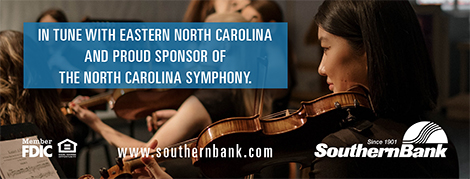Symphony No. 3 in F Major, Op. 90
Johannes Brahms (1833-1897)
THE STORY
Brahms experienced a difficult start to composing symphonies: the gestation period of his First Symphony spanned over 14 years. He felt considerable anxiety in the shadow of Beethoven’s monumental symphonies and confessed to a friend, “You can't have any idea what it's like always to hear such a giant [Beethoven] marching behind you!”
By the Third Symphony, Brahms had grown more comfortable writing for the orchestra and composed the work in only a few months. While the first two symphonies are of sprawling length, the Third is the shortest of his four; but despite its relative compactness, the Third Symphony possesses a wealth of allusions that shed light on his musical relationships with his friends.
The symphony begins with a powerful statement of three notes, F – A-flat – F, the last of which begins the first note of the first theme. The three-note motif is a musical cipher for Brahms’s personal motto, “frei aber froh” (“free but happy”), which was in turn an answer to the motto “F – A – E” (“frei aber einsam” – “free but lonely”) of his friend, the famous violinist Joseph Joachim. The commanding first theme references music by another close friend of Brahms and Joachim: Robert Schumann’s Third Symphony, the “Rhenish.” It was during this same period that Schumann prophesied that the young, talented Brahms would become the successor to Beethoven.
Indeed, Brahms reached the height of his fame by the 1880s, and the warm reception to the Third Symphony attests to the renown he achieved. Clara Schumann, the widow of Robert and Brahms’s lifelong friend, declared each movement a “jewel,” and Antonín Dvořák, a younger composer championed by Brahms, proclaimed, “this work surpasses his first two symphonies; if not, perhaps, in grandeur and powerful conception—then certainly in—beauty.”
LISTEN FOR
- The opening motto, F – A-flat – F: the first two notes are scored for winds alone, the last note begins the first theme, vigorously stated by the strings above the heaving swells of the low brass
- Various iterations of three-note motto in different instruments throughout the symphony—for example, in the horn and the oboe as they foreshadow the recapitulation of the first movement, and at the conclusion of the entire symphony
- The soulful waltz in the third movement: first introduced in the cellos, repeated an octave higher by the violins, then by the woodwinds
INSTRUMENTATION
Two flutes, two oboes, two clarinets, two bassoons, contrabassoon, four horns, two trumpets, three trombones, timpani, strings
Notes on the music by Joanna Chang

